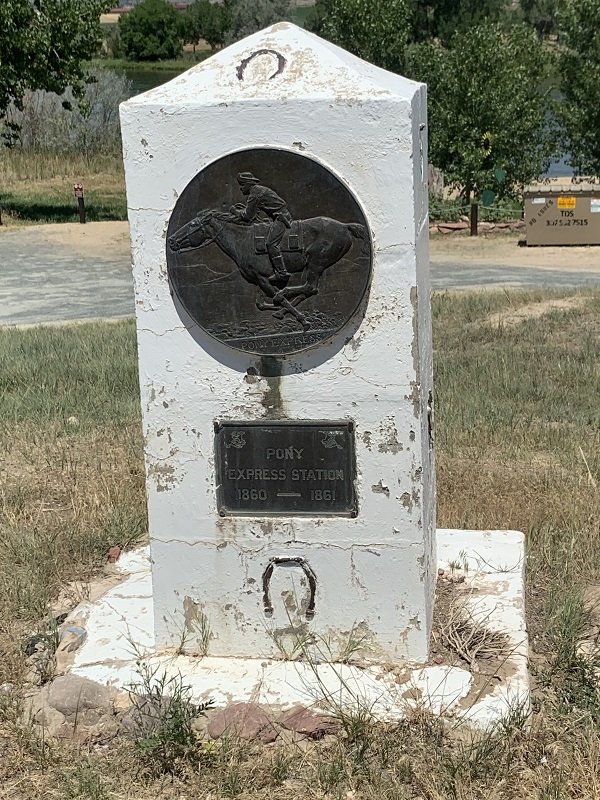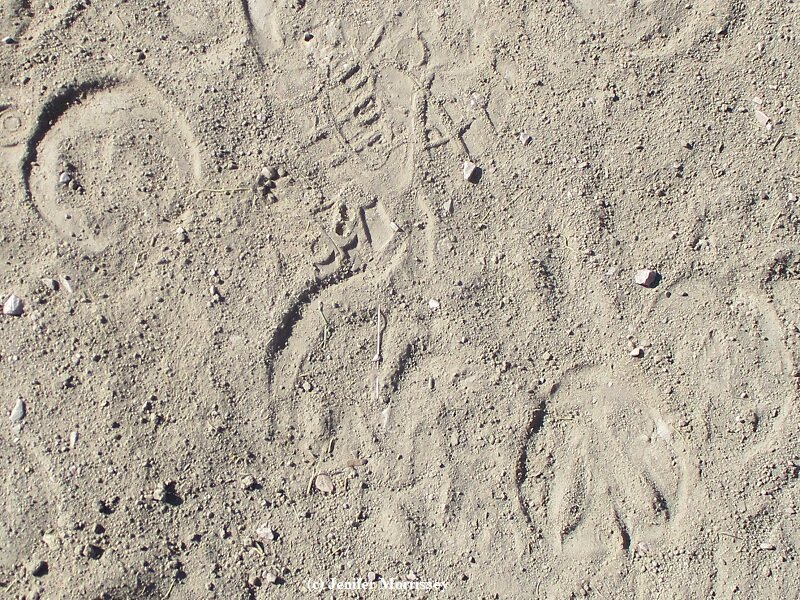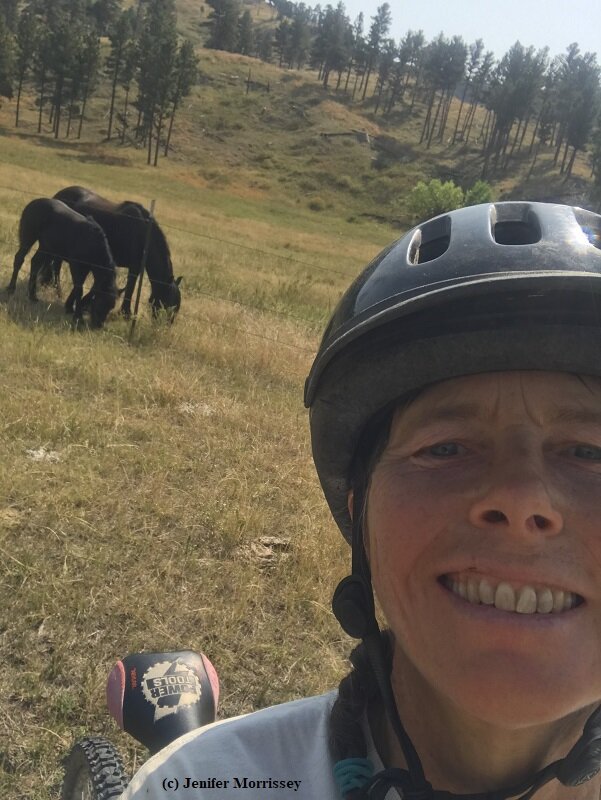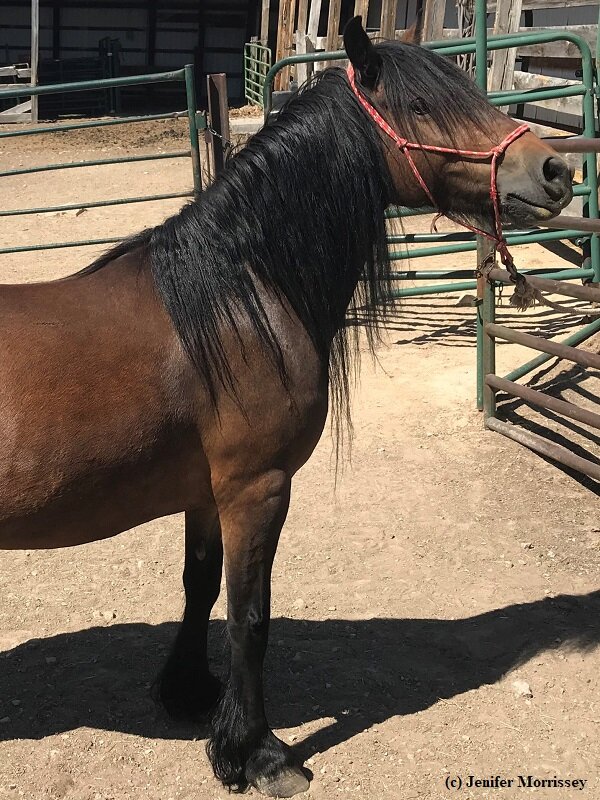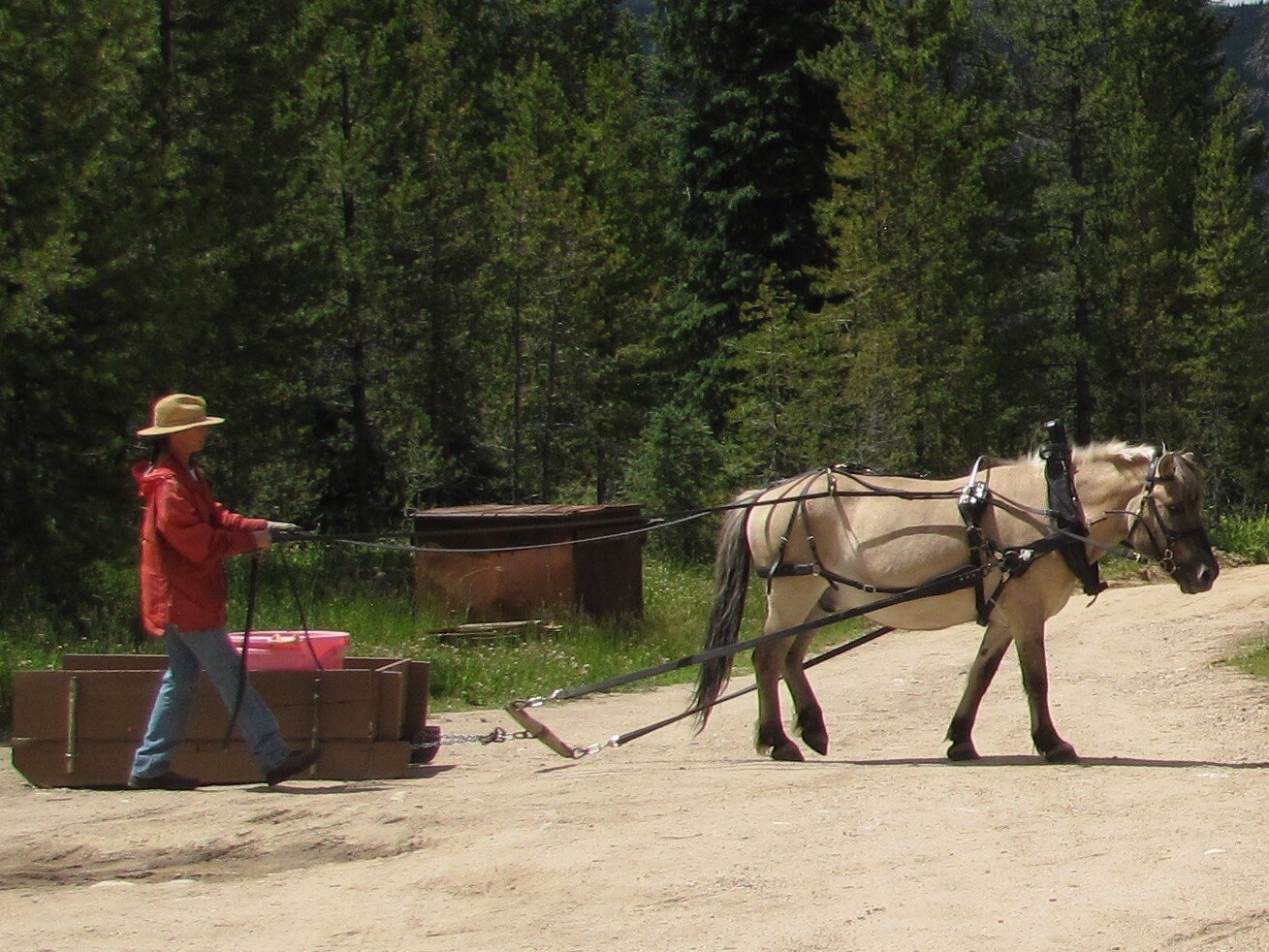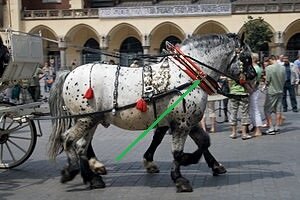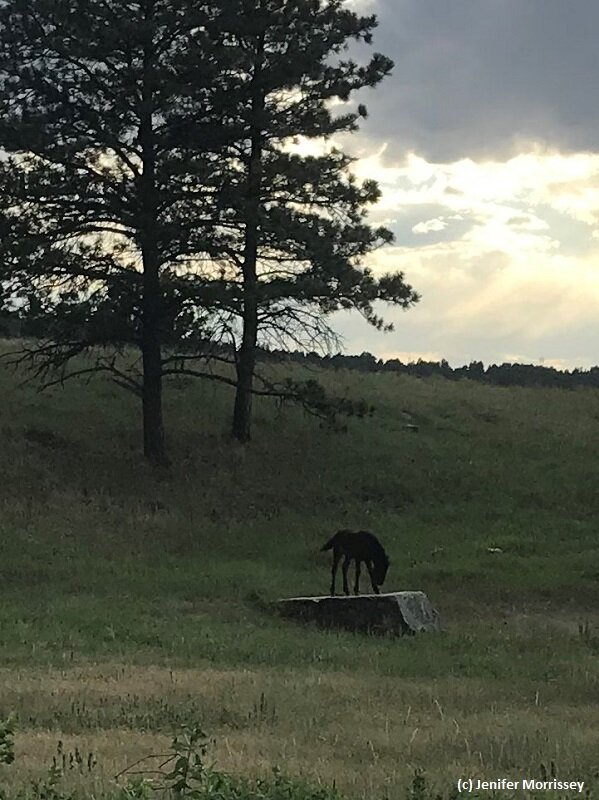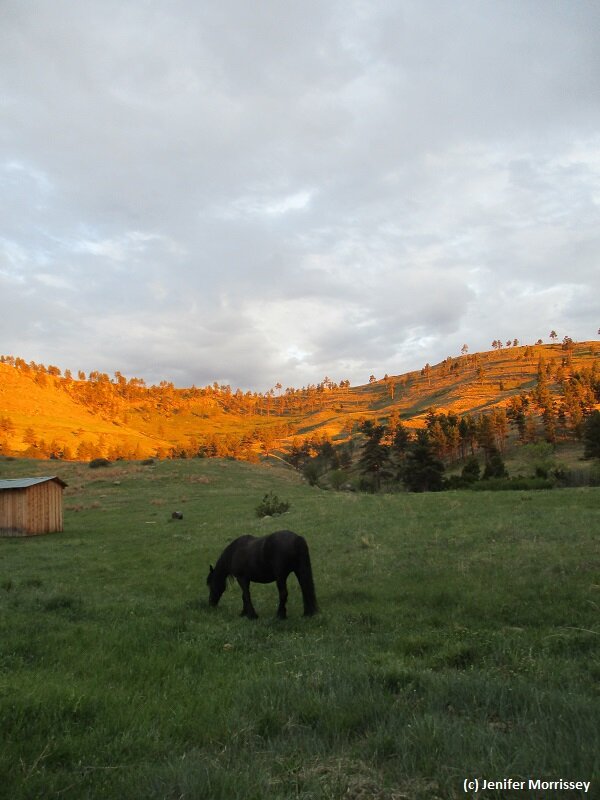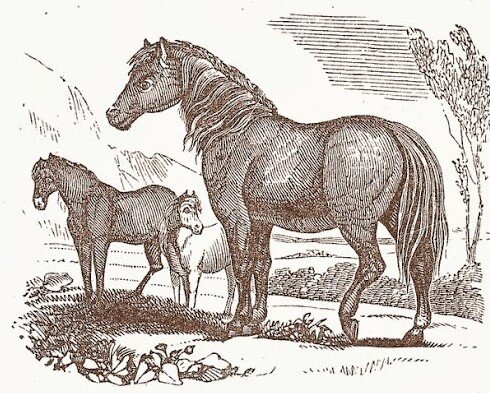Ponies grazing near blowdown due to microburst six months before.
I came outside to do my last-of-the-day check on the ponies before dark. On the hillside to the southeast I noticed black spots up high, so after feeding my stallion, I headed towards the black spots thinking they were my mare herd. I got about two-thirds of the way to them, and it seemed strange that the black spots would be my ponies because they were in the prevailing wind. Usually the ponies seek areas that are sheltered from the wind. Then I realized that what I was seeing was cattle.
I climbed around a knoll, and sure enough, two ravines over on the top of a level spot out of the wind, I saw my ponies. By the time I got through those two ravines, only two ponies were close enough to me to say hello to. I couldn’t venture to the others up higher because impending darkness meant I needed to start heading down. As I called good night to the rest of the herd and headed down the hill instead of towards them, I heard a young pony cry out to me. It was Lettie, the two-month-old daughter of my heart pony, wondering why I wasn’t coming to say hello.
My pony herd has created or enhanced paths across the landscape: the obvious one on left and another on the right under red arrow
As I turned downhill, I realized that the approaching darkness was going to make my descent interesting. I was still favoring a sprained ankle, so I needed a route down as free of obstructions as possible. I also needed a route where I could see the ground in the failing light, since the grasses and shrubs easily obscured rocks and holes that my ankle would be quite unhappy encountering. Around me were numerous downed trees, the result of a microburst or mini-tornado in the spring, making the choice of route even more complicated than usual.
My ponies have now been on this pasture long enough that they have established paths across the landscape, in many cases using paths created by other, sometimes previous, four-legged inhabitants. I have learned by following them that the ponies typically choose routes that are relatively free of obstructions so can be trusted from that regard, and while they may not appear to go where I need to, they likely lead to another path that will indeed go where I want to go. So I looked about me in the failing light and was relieved to see that the ponies had not only made paths in the area but had rerouted them since the blowdown. A pony path was just what I needed when I couldn’t see very well.
Trees down over fence due to microburst
As I pondered which of the paths to use around the downed trees, I remembered a story in the histories I’ve been reading about this area. The story said that while Native Americans loved the Black Hills and considered them sacred, they also were afraid of them because they felt the Great Spirit grew angry often and caused wild wind storms. Having witnessed myself that microburst a few months before, I could totally relate to that mixed feeling of awe and fear. The cattle that had led me astray in my search for ponies were in the pony pasture because the microburst took out much of the fence on that end. The ponies have not ventured out, but the cattle have ventured in!
I am very aware that my presence in the Black Hills here in South Dakota has been made possible by a broken treaty in the 1800s. The US government had agreed with the local tribes that they could have the Black Hills, and the government would keep Americans out. But then gold was found in the Hills, and the US government reversed course and allowed miners and prospectors and supporting businesses to enter the Black Hills. I don’t like it when agreements I make with other people are broken, so I completely understand that the tribes felt violated and may still. Knowing that my presence here is due to a broken treaty makes every day here a gift.
It is easy to assume that things were the same in the past as they are in the present, but that’s usually not the case, just like the pony trails have changed over time to adapt to changing circumstances, and Euro-Americans now occupy land once occupied by native tribes. I read a story recently about two native American tribes that pushed a third tribe out of a region that they all occupied in the 1800s. Where the tribes were prior to being forced onto reservations isn’t necessarily where they were just a few decades before that.
Petroglyphs that researchers have chalked in to improve visibility.
Near where I live are petroglyphs, historic rock art created by ancient Americans. I have been told repeatedly that the art was done not by today’s native Americans but by people who lived here before them. The art has been dated to 3,000 to 6,000 years ago. Who lives in these Black Hills has obviously changed over time for a very long time indeed.
Maiden Castle (the pile of rocks on the mid horizon) on Burnmoor in the Lake District, Cumbria
It’s thanks to my ponies that I have an enhanced appreciation for how things change over time. It was on an historic packhorse track in the Lake District that I first appreciated that that area was settled by successive waves of humanity. On that trip it was the ruins known as Maiden Castle that I visited alongside two Fell Ponies that underscored for me that how a landscape is utilized today isn’t how it was utilized previously and that the people using it now aren’t the ones that used it before. The Lake District saw settlement by Romans and Vikings long before our time. There is evidence of Bronze Age and medieval settlement preceding more modern uses. Maiden Castle is considered Bronze Age by some and may also have been used as a communication beacon in the day. (1) For me, though, its importance is as a marker of changing circumstances, including how people steward land, what tools they bring to bear in that work, and how nothing ultimately stays the same. I am watching now with great interest as the Lake District’s humans struggle to figure out the way that stewardship of that landscape will look in the near-term future. Fell Pony stewards hope our ponies have a continuing opportunity to use the landscape as they have for centuries, while others want the use of the landscape to be different in the future. This struggle is at the same time current and ancient.
Here in the Black Hills, I’m aware of how this area has been used by successive waves of humanity, too. Of course I don’t know all the stories of humans in this place, but I know enough that each of us is here but transitorily. The Oglala Sioux tribe, former users of this landscape, now occupy a reservation to the southeast of these Hills, but it turns out they do own land here. I was fortunate to overlook a piece of their property, as American society currently defines it, on a summer venture into a nearby canyon. Perhaps the tribe will one day again make use of the Hills as they once did, but it’s also possible and maybe even more likely that it will be another wave of humanity that comes here to leave their own paths on the landscape that my ponies and I currently tread.
1) Fair, Mary C. “Some Notes on the Eskdale Twentyfour Book.” Read at Carlisle, April 7th, 1921. CWAAS Volume 22, #7.
© Jenifer Morrissey, 2021









